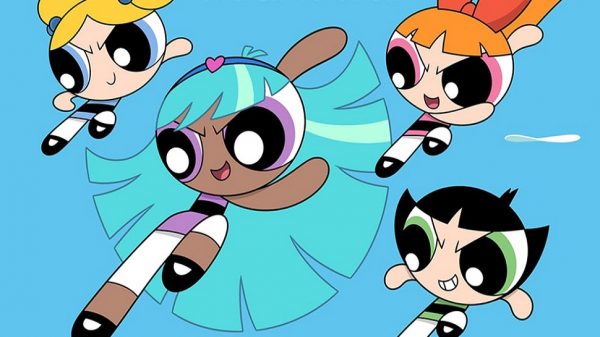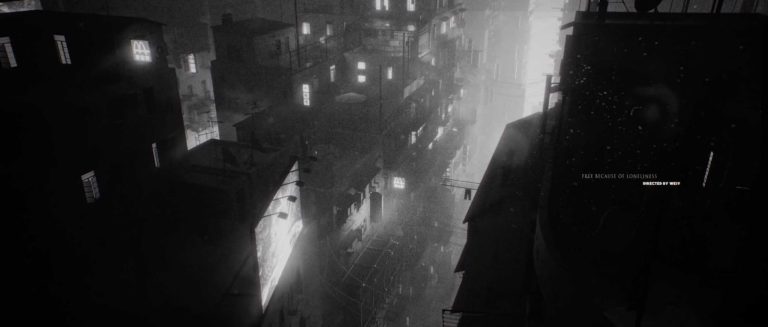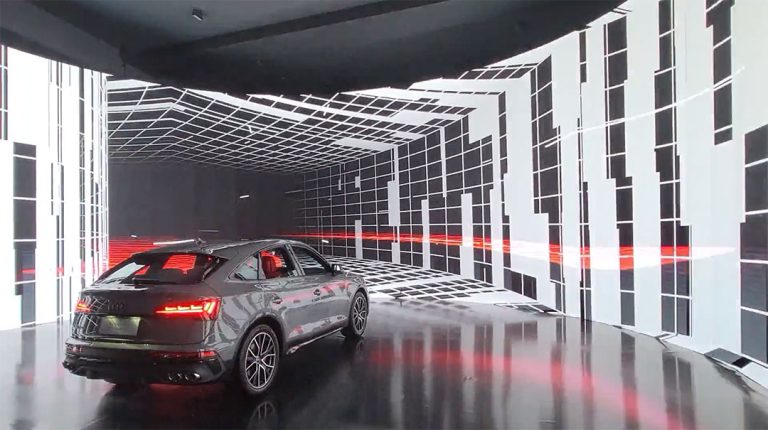The revelation that the Powerpuff Girls have a sister is certainly surprising. Bliss adds a new dimension to the long-established franchise that arguably is nonetheless long in the tooth. Yet why did it happen now? What is the bigger meaning behind the move? And why is Bliss a product of circumstance?

Disclaimer: I have not seen the episode in question, but this post is not about the episode(s) in which Bliss appears. It is strictly about her addition to the show, and its wider implications.
Everyone knows who the Powerpuff Girls are. Blossom, Bubbles, and Buttercup are the trio of superhero girls who are willing and able to smash evil in the face. They’ve done it for almost 20 years at this point, and their gig is solidified by a hefty five seasons and a feature film. Never exploited to their fullest potential, the show remains a massive success and is popular in America and beyond. It’s a show that captured lightning in a bottle, and formed part of Cartoon Networks big thrust into original programming.
The latest reboot being just that, it does seem odd to appear to fix something that isn’t broke. Yet the addition of Bliss to the lineup raises three key questions that are worth thinking about, namely:
- Why add her now?
- Why add her type of character to the show?
- Why is that a significant problem?
Registering a domain name is a fundamental step in establishing an online presence, whether it’s for a personal project, a business, or any other endeavor.
Progressive Mix of World News and Propaganda
Migrating from GoDaddy Website Builder to WooCommerce
Building an online store with a Website Builder is a great starting point for a new business.
WordPress Security Vulnerabilities and Solutions
Security is a massive topic in the modern world. Mental, physical, emotional, financial, cyber, we all care one way or another about at least one of those.
Perform an SEO Audit for WordPress
You can’t simply build a WordPress website and think you’ll attract traffic and users without having a solid search engine optimization strategy.
A key element of any successful search engine optimization strategy is performing regular SEO audits of your website.
1. Why Add a New Powerpuff Girl Now?
The long defunct website Jump the Shark used to consider two major events that if instituted, put a show over the edge. One was to move the show to a new location, and the other was to add a character. Countless examples litter the TV landscape, but the practice is more well known today for the extremely satirical Simpsons episode that parodied it: ‘The Itchy, Scratchy, & Poochie Show.’

All shows eventually run out of steam, and adding a character is often considered tantamount to an admission that the show in question has run its course. You can probably perceive why the idea is so popular with networks and showrunners alike. The stunt retains as much of the show’s original momentum as possible, and essentially buys time for all involved to (hopefully) get their affairs in order before the gravy train pulls into the final station.
Reboots are a pseudo exemption to the notion that a show is over the hill primarily because new crews, staff, and an altered cultural environment combine to create something that’s unlike what came before; despite efforts to recapture the magic of the original. In the case of the Powerpuff Girls, the reboot is appropriately distant from the original (although not as long as the new DuckTales series.)
All things being equal, there doesn’t appear to be a significant reason to add a new character now. The three sisters and other members of the core cast are well-established, well-liked, and have considerable enough depth to enable lots of exploration. This leads to the most logical conclusion that somebody felt the need to ‘reinvigorate’ the show by way of adding a fourth sister. As to why it’s happening now, well, given how old the franchise is, the odds of it happening at some point were pretty high anyway.
2. Why add her type of character to the show?
Bliss is a wholly new addition to the show. She represents a departure from the other sisters in looks, personality, and age. Introduced as the elder of Professor Utonium’s daughters, she is a teenager whose powers mimic the other’s but are adversely affected by adolescent emotions.
Bliss takes the original triplet characters and adds a significant dimensional shift to their purpose. That is, of course, the intent, as her character is supposed to broaden the range and scope of prospective stories. The fact that she is a teenager almost certainly proves this to be the case.
It’s also the primary reason for such a radical departure from the original characters. Bliss is noticeably different in not only her age and personality, but also her skin and hair colour. These make her a contemporary character. The current iteration of the show (like any reboot) is far from immune to cultural shifts since the original, and in 2017, wider concerns about race, diversity, and representation all point to clear directions for any creator to go in, but especially large corporate networks.
Ever perceptive to the winds of change, networks and large studios must follow them. Ignoring strategic shifts in trends and consumer expectations is done at their peril lest they miss out on prospective profits. Such entities love to cover as many bases as they can and strive as hard as they can to do so. Focus groups exist for a reason, and Netflix collects vast amounts of viewing habit data for precisely the same reason. Target demographics are just that, and its in the network’s best interest to attract as much of the potential audience as possible.
In Bliss’ case, that means kids; specifically those of the current Generation Z, or the iGeneration. Their world is radically different from the Millennials who watched the original series and their expectations are different too. Wide ranging changes to popular culture and society drives their desire for content that reflects the world they live in. This cross-generational trait is why American pop culture got significantly darker after the events of September 11th. Kids growing up in 2017 don’t remember that, or even the events that immediately proceeded it. What defines their world is social connection and fitting in. They’re looking for characters that reflect who they are, and what they aspire to be in today’s society.
Bliss does a decent job of doing this seeing as traits such as her blue hair reflect contemporary styles, and her skin colour mirrors the much-increased presence of such people and characters in wider contemporary culture and society. Consider the daily presence of Barack Obama as president in the media as just one positive example.
In the overall sense, Bliss is exactly the kind of character that would be added to a cartoon in this day and age. She matches the needs, and she fits the definition of what her character ought to be as determined by a corporate network desiring mass appeal.
3. Why Bliss’s Addition is a Significant Problem
If Bliss is an additional character who’s needed, and she fits the parameters of that need, why would that present a problem?
The answer is rather complex, but ultimately ties a lot of what’s described above together. In once sense, Bliss is blameless, just as any other character whose added to an existing show. Her character isn’t an antagonist, and isn’t introduced with the explicit intent of upsetting the apple cart. However, in another sense, her addition represents a quandary lacking a suitable solution.
The biggest aspect of Bliss’ addition is that fact that she is a contemporary, 2017 character dropped head-first into a property from the 1990s. Try as they might, reboots cannot mitigate for all undesirable aspects of the original show, nor can they entirely remove aspects that are undesirable today without sacrificing what made the original special. In the case of the Powerpuff Girls, the distinctive nature of Bliss noticeably jars with the other characters. Her design and style proclaims an ability to fit in, but everything else sticks out like a sore thumb. This is not a negative comment, merely a statement of the obvious.
The other major aspect is that the very differences that makes Bliss a necessity also create an artistic distortion. The original series is distinctively defined as the adventures of three young girls who punch well above their weight. Concisely focused on them and how they see the world around them, it’s a solid, tight concept that rightly succeeded. The insertion of Bliss distorts the concept by redefining the girls’ place in the world and within their own house.
Such an action is not entirely unrelated to the placement of the Fearless Girl statue in front of the Raging Bull of Wall Street. The artist of the latter is upset and points out that the addition of Fearless Girl alters the artistic perception of his own statue to something other than what he intended it to be. Without getting bogged down in the details, the reason why his opinion is justified isn’t that Fearless Girl is present at all, but rather that her presence makes a mockery of the bull and all it stands for. In contrast, the Bull as originally conceived was meant to represent the charging, unpredictable nature of the stock market and the havoc its capable of creating. Fearless Girl alters the perception of the bull, and by extension the stock market to one that detracts of the potency of the original.
Does Bliss do the same for the Powerpuff Girls?
She certainly does not detract from their original artistic intent, but she does shift the focus away from them. She lessens their potency but also detracts from their core message: little girls aren’t to be messed with.
Lastly, Bliss’ nature raises a whole bunch of uncomfortable questions for the original creative team. Not least of which is: why isn’t the original cast diverse? Why are the original girls (and a hefty chunk of the remaining cast and side characters) homogeneous? The girls are triplets, but they are also artificial. Other cartoons and shows whose names escape me at the moment have lampshaded the fact that siblings have radical differences between them. Couldn’t the three original sisters have been blessed with more than just different powers and eye colours? Bliss merely highlights the fact that the Powerpuff Girls in its original form lacks such details considered necessary today.
The other question begging to be asked is why couldn’t the entire series have been rebooted with a completely different cast? It’s a practice much more in line with traditional reboots and enables a cast to be completely contemporary and in tune with current culture. Throwing a new character to the audience as a bone of sorts is regrettable. For a small increase in risk, Cartoon Network could have offered a whole new cast based on the same premise.
Conclusion
Bliss’ commendable character has an impossible task. She’s shoehorned into a show from the past and is all the worse for it. Constrained on the one hand by an existing franchise, and on the other by cultural demands and needs, she will ultimately be unable to reach her full potential.
That’s a real shame, especially since cartoons today are striving to push the envelope of traditional kids TV in so many ways. Rebooting the Powerpuff Girls could have been a golden opportunity, but Bliss unfortunately demonstrates how far short the effort truly falls.






